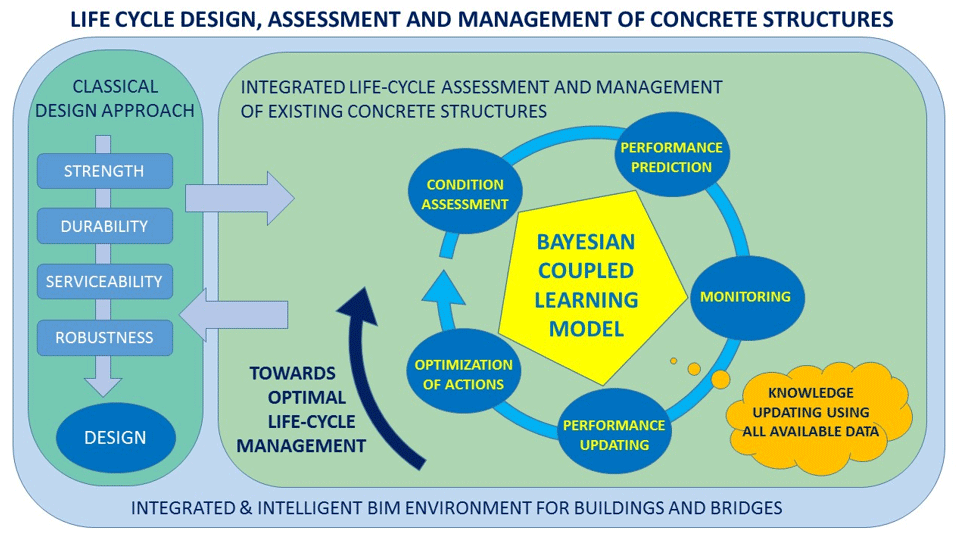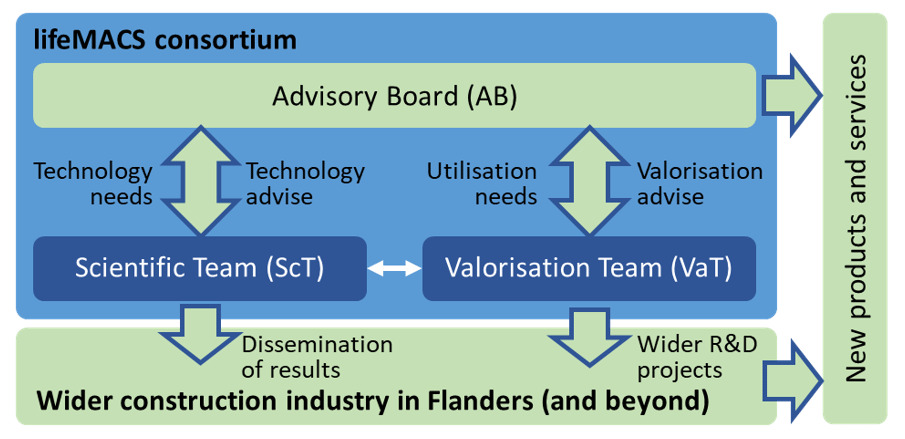A Few Words
About lifeMacs
Refurbishment and retrofitting of existing structures in industrialized countries are currently gaining in importance while new construction rates stagnate. This is due to the ageing patrimony of many developed countries. In Flanders for example, 69% of the building stock was constructed before 1981 and 28% even before 1945. Currently, the biggest challenge lies in the assessment and management of these ageing structures considering costs for inspections, repair and upgrading, while also keeping in mind human safety. Therefore, the development of an adequate framework for an efficient through-life analysis of structures on the basis of quantitative date is highly desired.

The results from the lifeMACS project will create important opportunities for several industry sectors, such as companies offering damage diagnostics and monitoring, engineering design offices, control and certification bodies, contractors, material suppliers, construction software providers, owners and asset management firms. It will furthermore significantly improve durability and sustainability, by facilitating high-level service-life management, promoting longer lifespans. This proves the relevance and importance of the lifeMACS project, as it will create potential for many industries, contribute to a longer and safer lifetime of existing concrete structures and improve durability and sustainability.

This project is unique in a way that it combines the strengths of Ghent University, KU Leuven and Buildwise. Together with the expertise of the industry partners in the advisory board, this multidisciplinary research will surpass the innovation capacity of the individual stakeholders, arriving at an integrated assessment, repair and management of existing concrete structures. Moreover, the results will ensure further ground-breaking industrial developments in the construction industry.